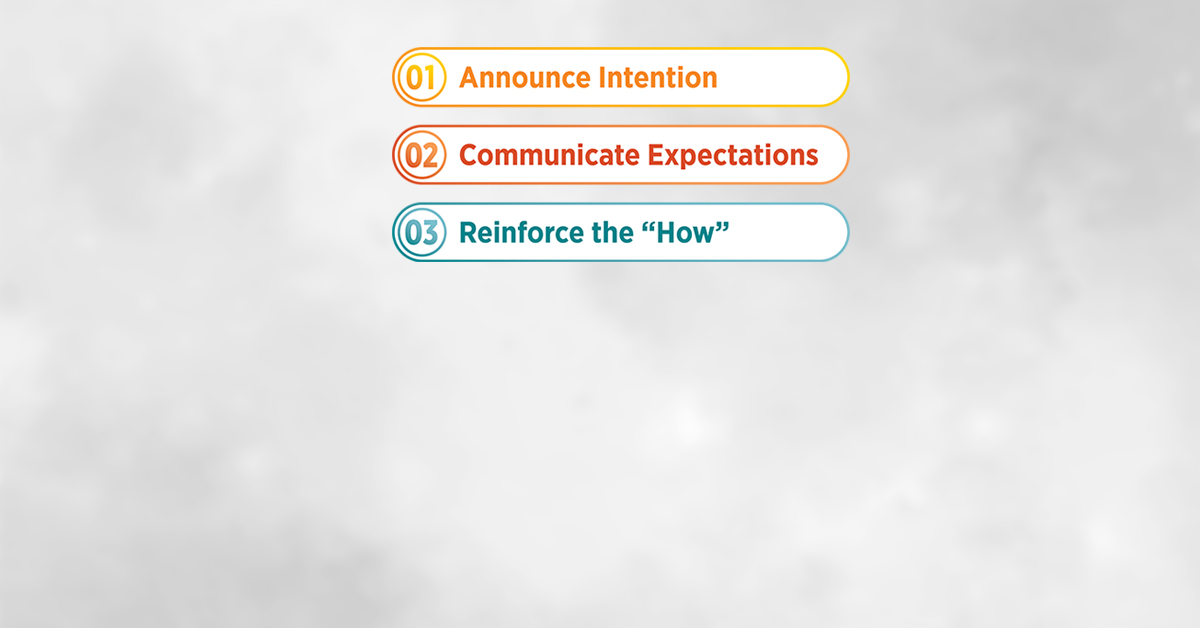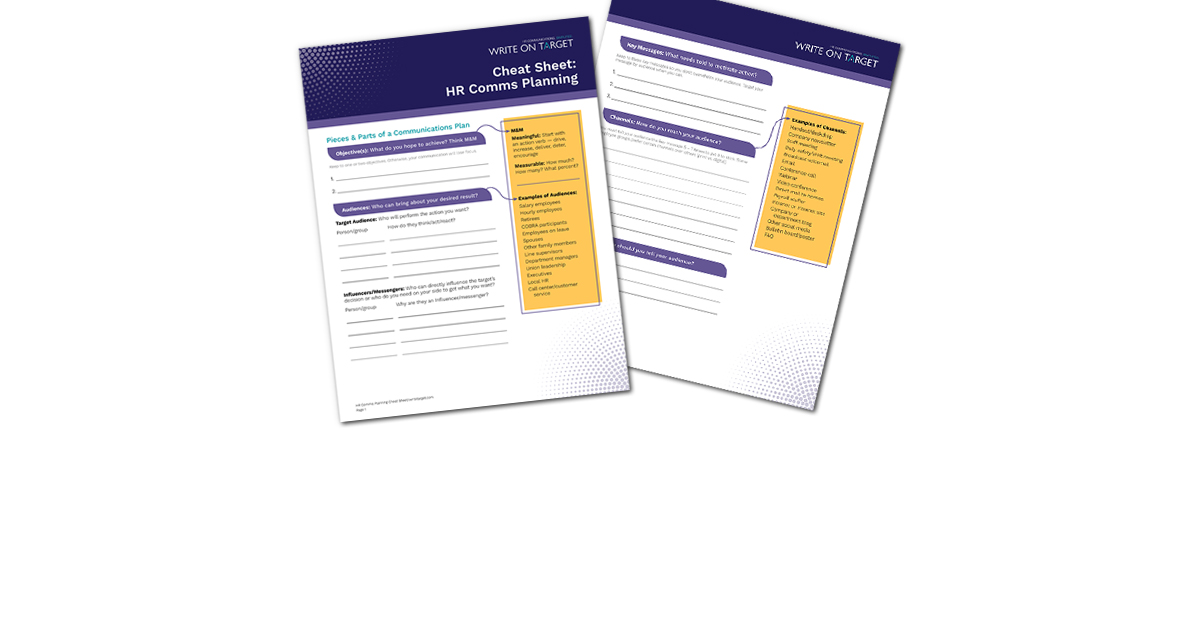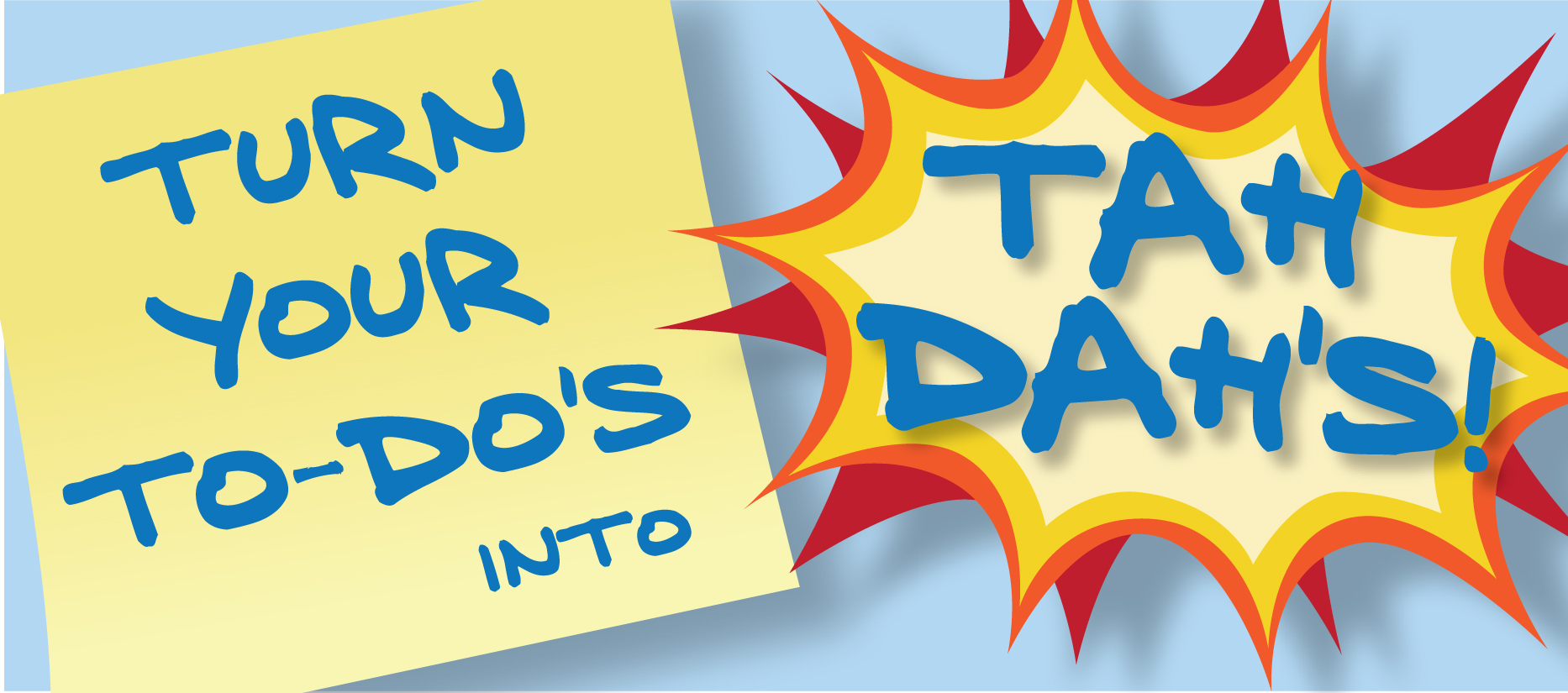In the communications world, announcing change can be tough. It takes time and thought. But if you’re in HR, there’s an extra level of stress — because although you may not be the reason for the change, you’re often the messenger. There’s a three-phased change management communication plan that can help ease the stress of communication for HR, and lessen the angst of transition for the employees.
Let’s walk through it, then you can download it.
Highlights vs. Details — We’ll Give You Both
If you’re looking for the highlights before a full document download, you’ll find what you want below. To see the details on messaging and channels, plus helpful tips, download the full communication plan.
Timing Is Key, but Also Scalable
Ideally, you’d start communicating several weeks before the change takes effect — up to six or seven weeks beforehand. If you don’t have the luxury of time, the communications schedule can be tightened, but the phases need to be spaced out accordingly.
Messaging Makes (or Breaks) a Communications Campaign
Often, HR wants to stay away from the “why” of an upcoming change. But, if at all possible, tell employees why the company is making the change. Otherwise, they’ll fill in the blanks through the rumor mill. “Because there’s going to be a big layoff.” Or, “Because we’re getting acquired by another company.”
Trying to hide bad news is never a good idea. Employees are smart enough to see through any spin you might be applying to the message. Transparency is almost always your best bet, and it’ll earn you respect.
For each phase in the change management communication plan, you’ll need to think about three key factors:
- Who you’re talking to — it may be multiple audiences per phase
- What you’re saying to each audience
- How you’re getting the word out to them
In every message you send, refer people to one place for more information — the “source of truth.” And, if employees need to actually do something, make sure you make that crystal clear and point them in the right direction.
Phase 1: Announce the Company’s Intention
This is the “heads up” phase. It’s high-level information for the masses. For leadership, they’ll want to know details of what’s happening. It’s possible you could offer them more of the backstory than all employees will need to know.
- First, senior leaders and HR managers — make sure they have a script with talking points, so they know how to talk with their direct reports. Because these people are busy, a live webinar is a great way to get their attention. And you can follow it up with the documents they’ll need as the weeks roll on.
- Then, all employees — they’ll ask questions, so be ready with your “why” script. If you don’t have the answers yet, it’s acceptable to answer: We’re working on it. Among other channels, a video message from the CEO lets people know this is important, and postcards sent home get the attention of other family members.
- And, other influencers — if you can, ask for help from ERGs, wellness champions and employee ambassadors.
Phase 2: Communicate Expectations
This is when you’ll let everyone know what actions they might have to take, or what you’re expecting of each audience.
- First, department/line managers, HR managers, influencers — share with them the communications you’ll be sending to all employees. If you have additional details since the first phase, share those, too. Generally, email works well at this level, but an organized, plain-language FAQ is key, too. (Read more about how line managers can help HR.)
- Then, all employees — explain what they’ll need to do when the change becomes effective. If there are forms to fill out, information to gather, costs to consider or decisions to be made, let them know. This is a good time to rely on team huddles on the floor and posters in the bathrooms.
Phase 3: Communicate the “How”
When the time comes to launch the new program or make the change official/effective, be sure everyone knows what they need to do and by when. There may be logistics, online forms, checklists, etc.
Depending on the audience, use the communication channel most effective. Non-desk workers will likely overlook an email and don’t regularly check the intranet. Table tents are great for break rooms, and it’s hard to overlook a poster in a bathroom stall. Loudspeaker announcements work in a warehouse, or radio broadcasts for truck drivers. Think outside the HR box!
When to Start Planning Your Communications
Once you know a change is occurring, it’s time to engage your communications team. Generally, you’ll start sending communications six to seven weeks out, but you can start crafting your messages and lining up your support way before then.
Download the change management communication plan



